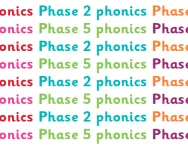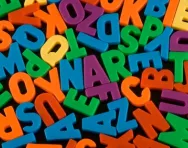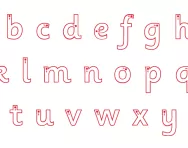TheSchoolRun.com closure date
As we informed you a few months ago, TheSchoolRun has had to make the difficult decision to close due to financial pressures and the company has now ceased trading. We had hoped to keep our content available through a partnership with another educational provider, but this provider has since withdrawn from the agreement.
As a result, we now have to permanently close TheSchoolRun.com. However, to give subscribers time to download any content they’d like to keep, we will keep the website open until 31st July 2025. After this date, the site will be taken down and there will be no further access to any resources. We strongly encourage you to download and save any resources you think you may want to use in the future.
In particular, we suggest downloading:
- Learning packs
- All the worksheets from the 11+ programme, if you are following this with your child
- Complete Learning Journey programmes (the packs below include all 40 worksheets for each programme)
You should already have received 16 primary school eBooks (worth £108.84) to download and keep. If you haven’t received these, please contact us at [email protected] before 31st July 2025, and we will send them to you.
We are very sorry that there is no way to continue offering access to resources and sincerely apologise for the inconvenience caused.
Parents' guide to Phase 3 phonics

What is Phase 3 phonics?
Phase 3 phonics builds upon Phase 1 and 2 by introducing less commonly used sounds (or phonemes). Depending on which scheme your school follows, there are typically 25 of these sounds, often made up of two letters.
How are children taught Phase 3 phonics?
Children will be taught more tricky words such as ‘was’ or ‘they’. They will learn the names of the letters and the sounds that the letters make. Teachers may use mnemonics (memory aids), mini whiteboards, word cards and singing alphabet songs to help teach the children these tricky words.
How long does Phase 3 phonics take to teach?
It typically takes around 12 weeks for children to be taught Phase 3 phonics, and by the end of this period, they should be able to recognise and say the sounds of most of the Phase 2 and Phase 3 symbols (graphemes), blend CVC words, and read 12 tricky words and copy letters correctly.
What sounds are taught for Phase 3 phonics?
In addition to learning the sounds below, children in Phase 3 phonics continue to practise blending sounds to read simple words and segmenting words into individual sounds for spelling. Tricky words (sight words that cannot be easily sounded out) are also introduced during this phase. The emphasis is on building fluency in blending and segmenting, which are crucial skills for reading and spelling.
| Sound | Example |
|---|---|
| ai | train |
| oo | moon |
| air | hair |
| ar | car |
| ch | chair |
| ear | beard |
| ee | sheep |
| er | rubber |
| igh | night |
| j | jelly |
| ng | ring |
| oa | goat |
| oi | coin |
| oo | book |
| or | horn |
| ow | cow |
| qu | queen |
| sh | shower |
| th | thumb |
| ure | cure |
| x | x-ray |
| y | yellow |
| w | witch |
| z | zebra |
| zz | buzz |
How can you help support Phase 3 phonics learning at home?
Supporting Phase 3 phonics at home is a great way for parents to reinforce what children are learning in school and help them develop strong foundational skills in reading and spelling. Here are some suggestions:
- Read books together, emphasising words that contain Phase 3 sounds. Choose books that include words with consonant digraphs (e.g., ship, chip) and vowel digraphs (e.g., rain, feet).
- Use phonics games and activities that focus on Phase 3 sounds. There are many online resources, apps, and printable games designed to make learning phonics fun.
- Create flashcards with Phase 3 phonemes and tricky words. Practise blending sounds to read words and segmenting words into individual sounds for spelling.
- Use magnetic letters to create words with Phase 3 sounds. Encourage your child to sound out the words and blend the sounds together.
- There are several phonics apps designed for children that cover Phase 3 phonics. These apps often include interactive games and activities to engage and reinforce learning.
- Practise writing words that include Phase 3 sounds. Encourage your child to write short sentences and stories, incorporating the new phonemes.
- Play rhyming games to reinforce the ability to hear and generate rhyming words. For example, you could say a word like cat, and your child can come up with rhyming words like bat, hat, or mat.
- Introduce and practise reading tricky words. These are words that cannot be easily sounded out and need to be recognised by sight.
- Make flashcards or play games with tricky words.
- Label common items around the house with words containing Phase 3 sounds. This helps reinforce the association between sounds and written words in a real-world context.
- Celebrate your child's achievements and progress. Positive reinforcement helps build confidence and a positive attitude towards learning.






